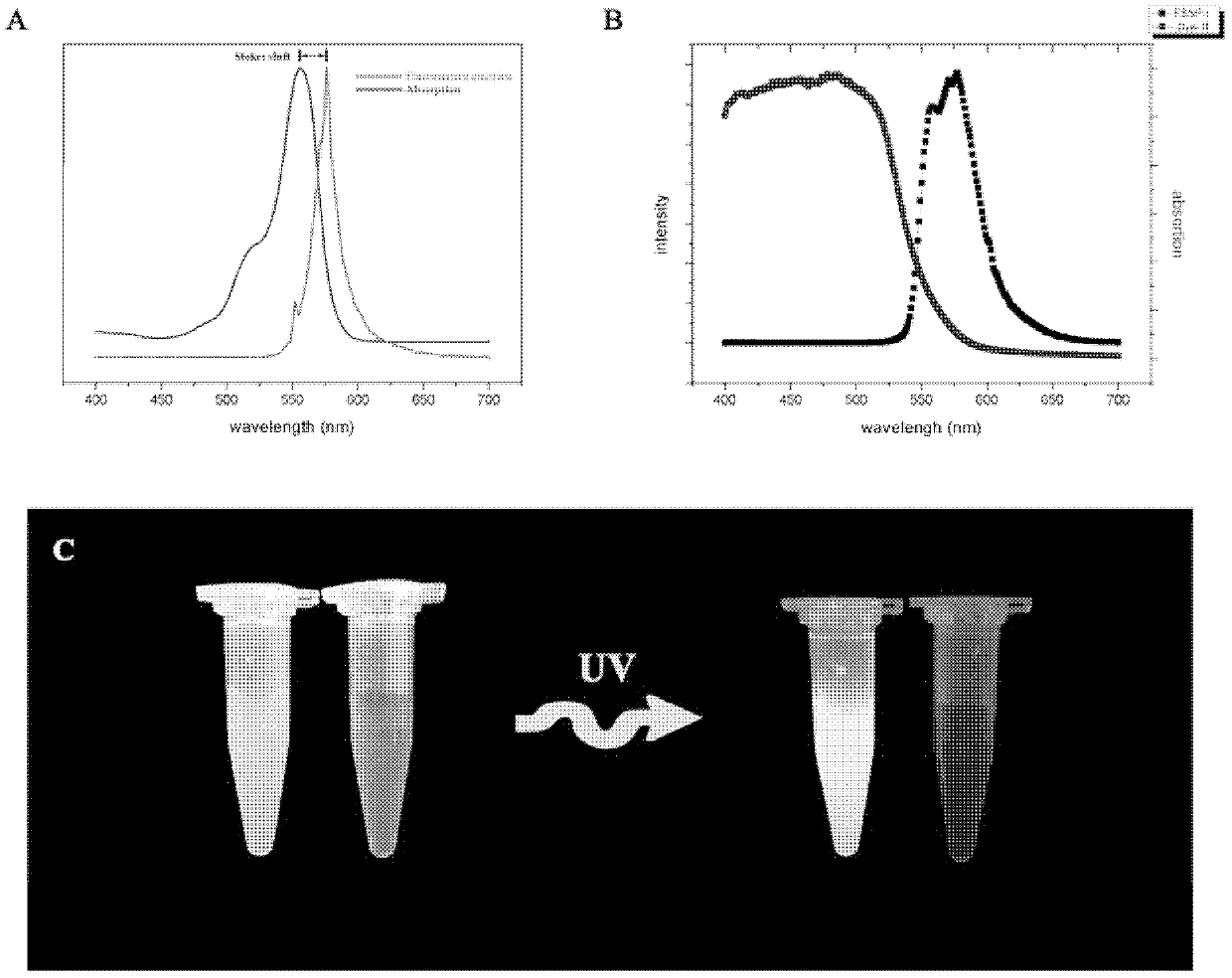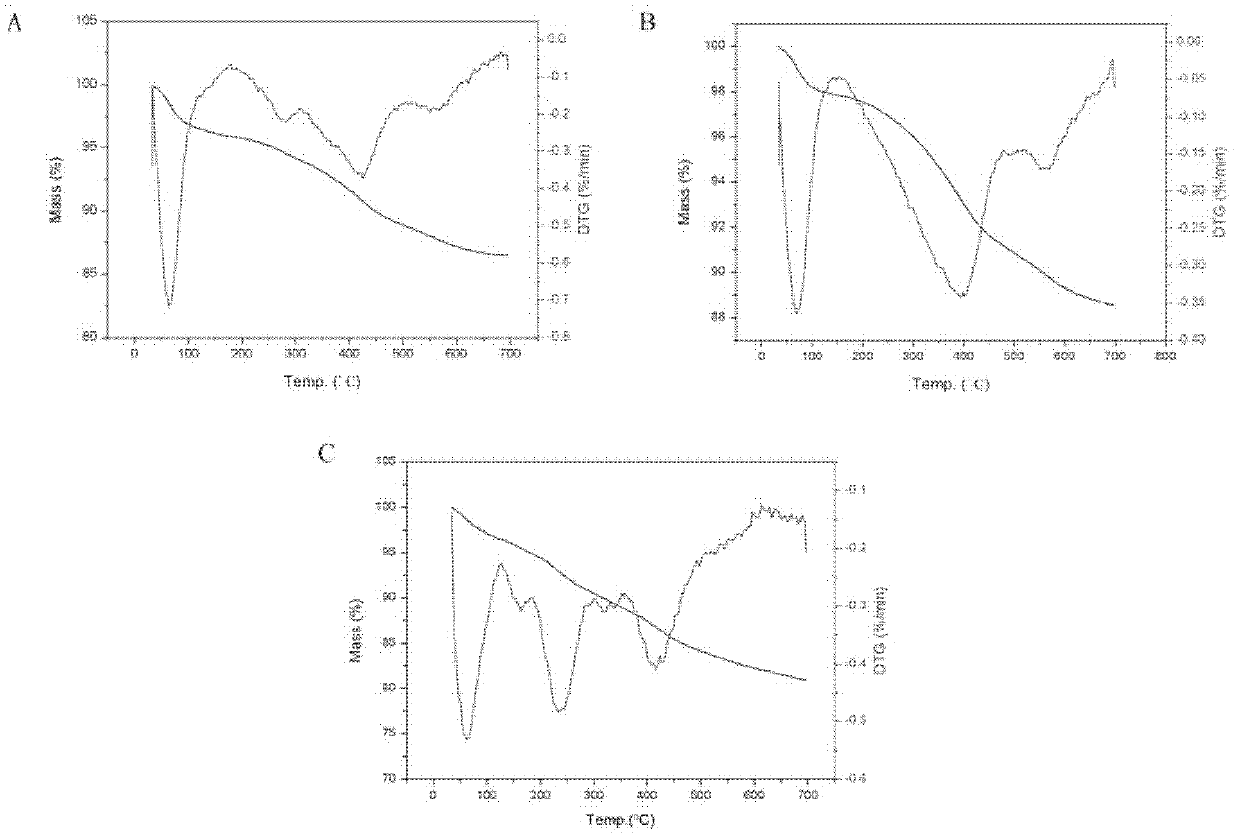A kind of core-shell nano-silica fluorescent probe and its synthesis method and application
A nano-silica, fluorescent probe technology, applied in nano-optics, chemical instruments and methods, biochemical equipment and methods, etc., can solve the problems of difficult microbial functional activity tracking and other problems, achieve high-sensitivity analysis and sorting, major practice The effect of meaning and application potential
- Summary
- Abstract
- Description
- Claims
- Application Information
AI Technical Summary
Problems solved by technology
Method used
Image
Examples
Embodiment 1
[0035] The schematic diagram of the synthesis process of dye Rod-X and dye Methyl-S is as follows: Figure 14 As shown, the synthesis flow chart of NP-1 and NP-2 is as follows Figure 15 As shown, the specific synthesis process is as follows.
[0036] 1) Synthesis of dye Rod-X:
[0037] Add 0.48g rhodamine B, 1.46g allyl bromide (12mmol), 2.65g Cs to a 100mL volumetric flask 2 CO 3 Dissolve in 50 mL of dry DMF, heat to 80°C under nitrogen protection, react overnight, add 200 mL of dichloromethane, wash the organic phase with brine three times, dry the organic phase with anhydrous sodium sulfate, remove the organic solvent by distillation under reduced pressure, pass through silica gel column separation to obtain product 0.31g, yield 64% (methanol / dichloromethane=1:40, R f = 0.2). 1 H NMR (400MHz, CDCl 3 ) δ1.3(t,CH 3 ,12H),3.5(q,CH 2 ,8H),4.5(d,CH 2 ,2H),5.1(t,CH 2 ,2H),5.7(qd,CH,1H),6.8(s,Ar,2H),6.9(d,Ar,2H),7.0(d,Ar,2H),7.3(m,Ar,1H),7.8 (td,Ar,2H),8.32(d,Ar,1H).HR...
Embodiment 2
[0047] Spectra of the nanoprobe:
[0048] Dye Rod-X and dye Methyl-S were dissolved in ethanol, nanoparticles were dispersed in aqueous solution, and their infrared, absorption and fluorescence spectra were tested. The infrared spectrum test uses a Fourier transform infrared spectrometer (Bruker / TensorII), with a test range of 4000-400cm -1 . The ultraviolet spectrum test uses an ultraviolet-visible spectrometer (SHIMADZU / UV-2600), and the test range is 400-800nm. The fluorescence spectrum test uses a fluorescence spectrophotometer (Perkin Elmer / LS-45), the excitation wavelength range is 200-600nm, and the emission wavelength range is 400-800nm. The luminescence of the nanoparticles was observed using a hand-held UV lamp.
[0049] figure 1 It is the spectral analysis of the nanoprobe and the dye of the present invention. A is the absorption spectrum and fluorescence emission spectrum of the dye Rod-X, the maximum absorption wavelength is 555nm, the maximum emission wavele...
Embodiment 3
[0051] The morphology and structure of nanoparticles:
[0052] Dry the nanoparticles at various stages in a vacuum drying oven at 60°C overnight, grind them into powder after fully drying, and perform thermogravimetric analysis test. The test temperature range is 30-700°C, and the heating rate is 10°C / min. Next test. Disperse the nano fluorescent probe in the aqueous solution, observe the shape and size of the particle by transmission electron microscopy (TEM), test its particle size distribution (DLS) by dynamic light scattering ( Figure 2-4 ).
[0053] figure 2 is the thermogravimetric analysis of nanoparticles in various stages of the present invention. Panel A is the thermogravimetric spectrum of silica nanoparticles without dye binding, which has two weight loss stages and loses about 9% of its weight. B is the thermogravimetric spectrum of NP-1, which has two weight loss stages and loses about 10% of its weight. C is the thermogravimetric spectrum of NP-2, which h...
PUM
| Property | Measurement | Unit |
|---|---|---|
| wavelength | aaaaa | aaaaa |
| wavelength | aaaaa | aaaaa |
| particle size | aaaaa | aaaaa |
Abstract
Description
Claims
Application Information
 Login to View More
Login to View More - R&D Engineer
- R&D Manager
- IP Professional
- Industry Leading Data Capabilities
- Powerful AI technology
- Patent DNA Extraction
Browse by: Latest US Patents, China's latest patents, Technical Efficacy Thesaurus, Application Domain, Technology Topic, Popular Technical Reports.
© 2024 PatSnap. All rights reserved.Legal|Privacy policy|Modern Slavery Act Transparency Statement|Sitemap|About US| Contact US: help@patsnap.com










